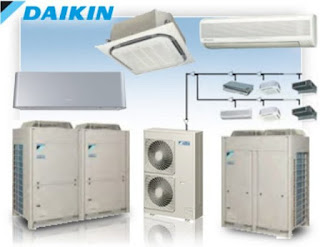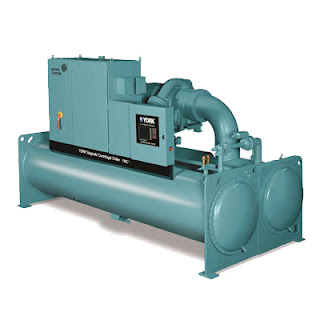Water Cooled Chiller in HVAC: Enhancing Energy Efficiency and Performance
Introduction
Water cooled chillers play a pivotal role in the HVAC industry, offering efficient cooling solutions for various applications. As the demand for energy-efficient systems rises, it's essential to understand the technical aspects and benefits of water cooled chillers in the HVAC sector.
Table of Contents
Packaged Chiller Units
Packaged Chiller Units
Compressors
Purge Or Pumpout System
Cooler (Evaporator)
Condenser
Unit Control Panel
System Control Panel
Vibration Isolation Mounting
Performance Testing In Factory
Refrigerant
Warranty
Packaged Chiller Units
Water cooled chiller units are designed to provide efficient cooling through the use of centrifugal or screw compressors, motors, coolers, condensers, and control equipment. These units are meticulously assembled, tested, and charged with refrigerant and lubrication oil before shipment.
Exploring Key Market Players in the HVAC Industry
When it comes to the HVAC industry, several market players have established themselves as leaders in providing innovative solutions for heating, ventilation, and air conditioning needs. These companies contribute significantly to shaping the landscape of indoor comfort and energy efficiency. Let's delve into some of the key market players in the HVAC sector:
- York Chillers: York is renowned for its diverse range of cooling solutions, catering to residential, commercial, and industrial spaces. Renowned for their dependability and cutting-edge features, their products stand out in the market.
- Carrier Chillers: Carrier is a global leader in HVAC solutions, offering cutting-edge technologies that focus on sustainability and energy efficiency. They have a strong presence in both residential and commercial markets.
- Trane Chillers: Trane stands out for its commitment to innovation and environmental responsibility. They provide a wide array of HVAC systems known for their reliability and smart controls.
- Hitachi Chillers: Hitachi is recognized for its energy-efficient cooling solutions that prioritize both performance and environmental impact. They offer a range of options suitable for different applications.
- McQuay Chillers: Acquired by Daikin, McQuay continues to be a prominent player in the HVAC industry. They offer comprehensive solutions for heating, cooling, and ventilation needs.
- Daikin Chiller: Daikin is a global leader that emphasizes advanced technology and environmental sustainability. Their HVAC products are designed to deliver optimal comfort while minimizing energy consumption.
- Clivet Chillers: Clivet focuses on eco-friendly and energy-efficient HVAC solutions. They provide systems that cater to various sectors, including residential, commercial, and industrial.
- Dunham-Bush Chillers: Dunham-Bush specializes in air conditioning and refrigeration solutions that prioritize performance and reliability. They present an extensive array of products suitable for various applications.
These market players play a crucial role in driving innovation in the HVAC industry. Their products and solutions contribute to creating comfortable indoor environments while adhering to energy efficiency and environmental standards. As the demand for sustainable HVAC solutions continues to grow, these companies remain at the forefront of shaping the industry's future.
Compressors
The heart of the chiller system is its compressor. The compressors can be either single-stage or multistage, and they should be designed for quiet operation and maximum efficiency. The use of helical gears, aluminum alloy impellers, and shrouded impellers helps achieve optimal performance. Capacity control is often managed by inlet guide vane assemblies to ensure efficient modulation.
Purge Or Pumpout System
Units operating with refrigerant under vacuum require a reliable purge system to manage non-condensable gases and water. A well-designed system with proper alarms, controls, and maintenance provisions ensures the longevity of the equipment and efficient operation.
Cooler (Evaporator)
The evaporator, a crucial component in the chiller unit, demands high efficiency. A well-designed cooler with copper tubes, external fins, and integrated mist eliminators ensures optimal heat exchange and reliable performance. Proper insulation of cold surfaces prevents energy loss and ensures efficient operation.
Condenser
Similar to the evaporator, the condenser must be designed for efficient heat exchange. Copper tubes with external fins, along with proper water connections, ensure effective cooling. The use of horizontal shell and tube design allows for individual tube replacement, making maintenance more manageable.
Unit Control Panel
The microprocessor-based control system enhances the chiller's performance and energy efficiency. With features such as precise temperature control, load management, and communication capabilities, the unit control panel offers advanced functionality. The display, interface, and monitoring options contribute to smooth operation and diagnostics.
System Control Panel
For installations involving multiple chillers, a system control panel is invaluable. It optimizes the coordination and operation of parallel chillers, ensuring efficient load distribution and energy savings. The panel's scheduling capabilities, energy-saving strategies, and communication interfaces enhance overall system performance.
Vibration Isolation Mounting
Vibration isolation mounting helps minimize noise and vibrations generated by chiller operation. This not only enhances the system's performance but also contributes to the comfort and well-being of building occupants.
Precise testing of chiller performance in the factory is vital to ensure compliance with specifications and guarantees. Performance tests cover various aspects, including water flow rates, temperatures, power consumption, and more. These tests provide essential data for validating efficiency and capacity.
Refrigerant
The choice of refrigerant is critical in line with environmental concerns. Refrigerants compliant with environmental agreements, such as R123 or R134a, ensure the chiller's eco-friendliness. Manufacturers should provide clear guidelines for refrigerant selection and its impact on the chiller's performance.
Warranty
The compressor and motor warranty is crucial for long-term reliability. The warranty terms vary based on the RPM of the compressor, ensuring that these components are protected and well-maintained over time.
Conclusion
Water cooled chillers stand as essential components in the HVAC landscape, contributing significantly to energy-efficient cooling solutions. Understanding their design, components, and operation is key to harnessing their full potential. By focusing on optimal compressor design, efficient heat exchange components, advanced control systems, and eco-friendly refrigerants, the HVAC industry can continue to enhance energy efficiency, reduce carbon footprints, and provide reliable cooling solutions for various applications.
Hashtags: #HVAC #Chillers #EnergyEfficiency #CoolingSystems #BuildingAutomation #SustainableTech #GreenHVAC #ClimateControl









